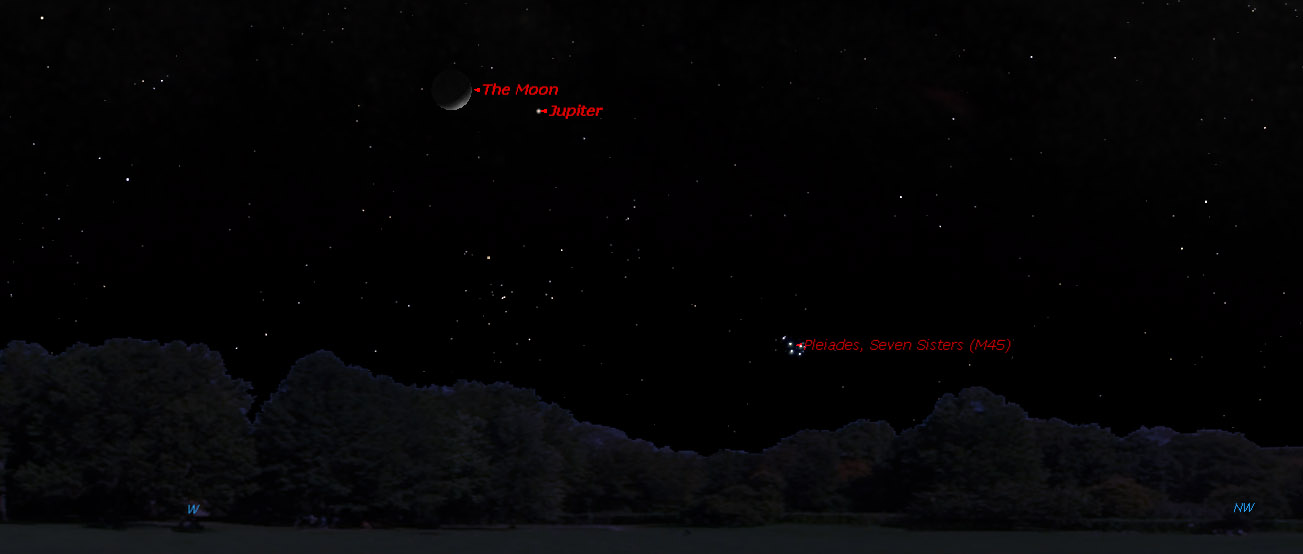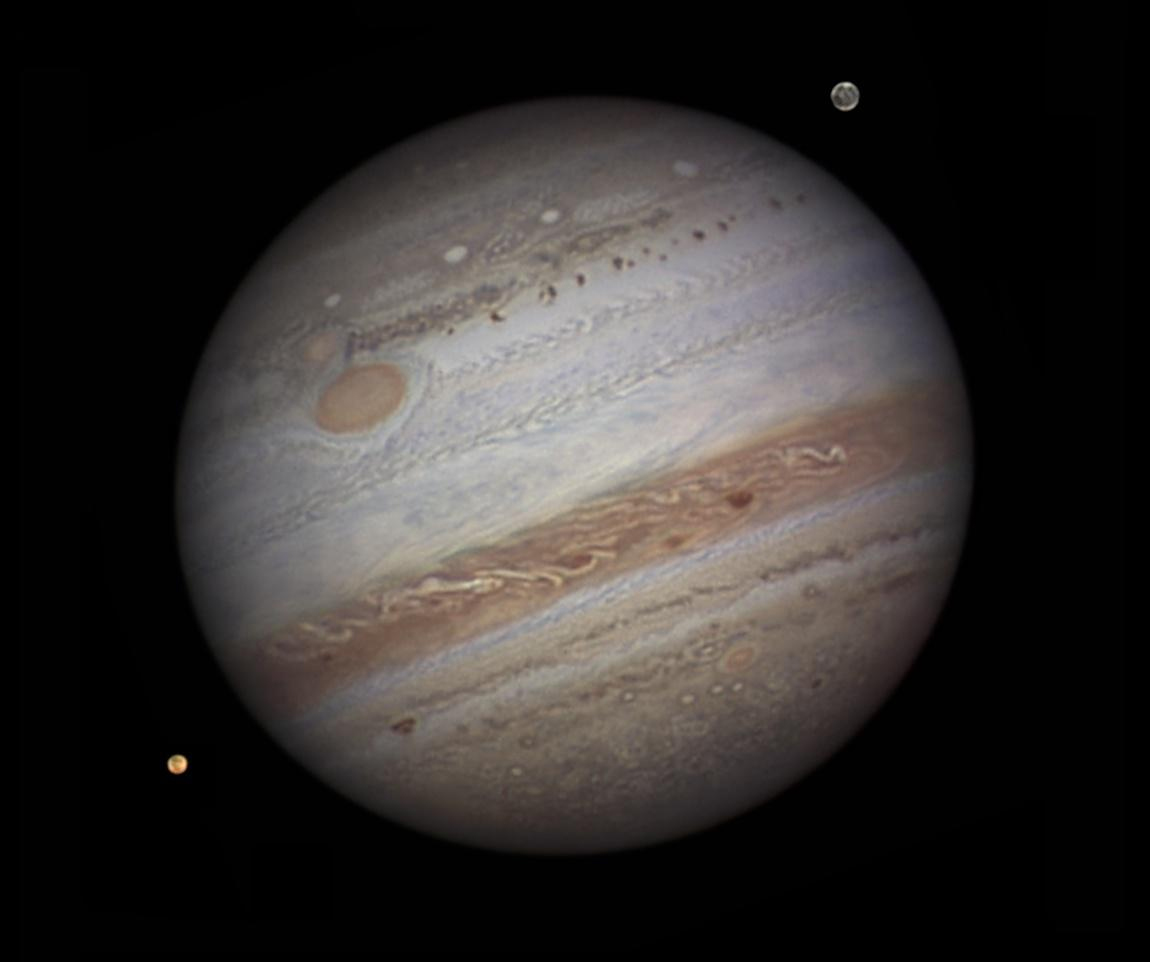Jupiter Shines Near the Moon Sunday: How to See It

If the weather is clear on Sunday night (April 14) to catch a potentially amazing sight: the planet Jupiter snuggling close to a thin crescent moon.
The celestial encounter will be visible in the western sky around mid-twilight, about an hour after sunset. At that time, the moon will be shining about one-third of the way up from the western horizon. It should be an eye-catching sight, with a slender sliver of a crescent moon shining right next to a bright star-like object — the bright planet Jupiter.
Jupiter will appear to be about 3 degrees from the crescent moon. To understand how far apart they will appear in the sky, recall that your clenched fist held out at arm's length will measure 10 of those degrees. So you can use your fist to make a reasonable estimate of degrees either horizontally or vertically.
In this case, Jupiter and the moon will appear rather close together; just one third of a fist apart. And partly because they will be the two brightest objects in the sky and partly because of their relatively close proximity to each other, both the moon and Jupiter will likely attract the attention of even those who aren’t consciously looking up at the sky. [Amazing April Night Sky Photos by Stargazers]
As the evening progresses, Jupiter and the moon will appear to descend down the sky, finally disappearing beyond the west-northwest horizon soon after 11:30 p.m. your local time.
Jupiter is still the brightest starlike object in the evening and the first to come out each night at dusk. It outshines the brightest true stars. In fact, it even rivals the brightest of all the stars, Sirius, which in early evening sparkles low in the southwest sky. When you are observing Jupiter, note how the planet shines with serene steadiness while Sirius, twinkles vigorously, as if struggling to match Jupiter's glory.
During April, Jupiter will slowly slip farther down into the glow of evening twilight in the west-northwest. And in about another month Jupiter will be setting right around the time evening twilight ends.
Breaking space news, the latest updates on rocket launches, skywatching events and more!
This month, Jupiter is falling far behind Earth in the never-ending planetary race around the sun and it continues to move slowly eastward among the stars. Currently it can be found between the horns of the constellation Taurus the Bull.
Because Jupiter takes nearly 12 years to orbit the sun, it spends about a year in each of the 12 zodiacal constellations. Jupiter moved into Taurus in mid-May of 2012 and will exit Taurus and move into Gemini the Twins late in June.
Editor's note: If you have an amazing picture of Jupiter and the moon or any other night sky view that you'd like to share for a possible story or image gallery, send photos, comments and your name and location to managing editor Tariq Malik at spacephotos@space.com.
Joe Rao serves as an instructor and guest lecturer at New York's Hayden Planetarium. He writes about astronomy for The New York Times and other publications, and he is also an on-camera meteorologist for News 12 Westchester, New York. Follow us @Spacedotcom, Facebookand Google+. Original article on SPACE.com.

Joe Rao is Space.com's skywatching columnist, as well as a veteran meteorologist and eclipse chaser who also serves as an instructor and guest lecturer at New York's Hayden Planetarium. He writes about astronomy for Natural History magazine, Sky & Telescope and other publications. Joe is an 8-time Emmy-nominated meteorologist who served the Putnam Valley region of New York for over 21 years. You can find him on Twitter and YouTube tracking lunar and solar eclipses, meteor showers and more. To find out Joe's latest project, visit him on Twitter.

